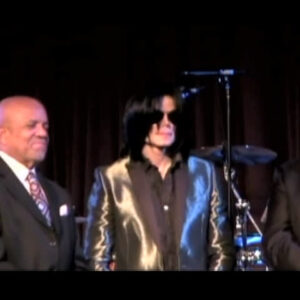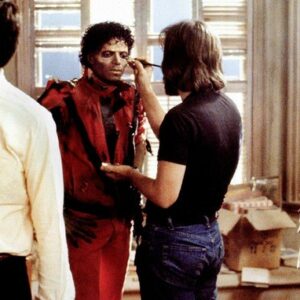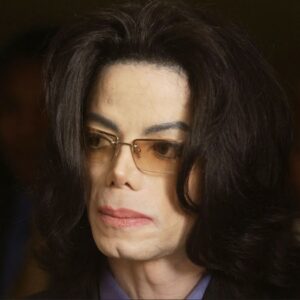Introduction to Pink’s Influence
Alecia Beth Moore, known to the world as Pink, is one of the most daring, resilient, and inspiring artists in modern music. Since her explosive entry onto the scene in the early 2000s, Pink has been a force to reckon with, not just as a singer but as an artist who embodies authenticity and raw emotion. From her debut album Can’t Take Me Home (2000) to her Grammy Award-winning records and countless chart-topping singles, Pink has carved out a career defined by reinvention and resilience. Her musical evolution spans pop, rock, R&B, and punk, making her a singular voice in a crowded industry. Over the years, she has defied the commercial constraints often imposed on female pop stars, instead pushing the boundaries of sound, performance, and persona. Her impact on music and culture is undeniable, and her influence on younger artists is growing stronger with each passing year.
Pink’s Unique Musical Style
Pink’s music is not easily pigeonholed. While she initially emerged as an R&B-pop singer, her sophomore album Missundaztood (2001) was a bold departure from that sound, blending rock and pop with deeply personal lyrics. The album’s rebellious spirit set the tone for her career. Tracks like “Just Like a Pill” and “Don’t Let Me Get Me” introduced listeners to a rawer, edgier Pink. The fusion of rock guitar riffs with pop melodies would soon become one of her signatures.
This cross-genre versatility is one of the most compelling aspects of Pink’s career. Where most pop stars pick a lane—whether it’s dance, balladry, or hip-hop-inflected pop—Pink has thrived by never staying in one. Her 2008 album Funhouse delved into rock and punk, while The Truth About Love (2012) blended her signature sounds with a more mature outlook on love and heartache. Tracks like “Blow Me (One Last Kiss)” mixed pop hooks with punk attitude, while “Try” married pop balladry with alternative rock sensibilities. Each album feels like a personal diary entry, reflecting her state of mind and the emotions she’s working through at that moment.
Pink’s sonic choices have inspired a new generation of musicians, particularly in the way she marries vulnerability with strength. For emerging female artists who don’t want to be boxed into a single genre, Pink stands as a beacon of possibility. Artists like Halsey, Miley Cyrus, and Billie Eilish have cited her as an influence in how they blend genres and reject the traditional constraints of pop stardom. Pink’s ability to craft music that appeals to the masses without compromising her sound or message has allowed her to remain a relevant and groundbreaking artist in an industry that often prioritizes commercial over creative success.
Empowerment Through Lyrics
Perhaps one of Pink’s most lasting influences is her lyrical content. From her earliest hits, she has sung about empowerment, self-confidence, and defiance against societal expectations. In a world where female artists are often pressured to conform to certain stereotypes, Pink has always pushed back against these norms.
A prime example is her song “Stupid Girls” from I’m Not Dead (2006), which takes aim at the cultural pressures placed on women to conform to certain beauty standards and behavioral expectations. Through biting satire, Pink critiques the media’s portrayal of women, simultaneously encouraging self-empowerment. Another empowering anthem, “Raise Your Glass,” celebrates individuality and the misfits who don’t fit into society’s mold. It is through such songs that Pink inspires emerging artists to embrace their true selves and challenge the norms.
One of the reasons Pink’s lyrics resonate so strongly with younger artists is because she addresses issues like insecurity, self-worth, and mental health in a way that feels both personal and universal. In “F**kin’ Perfect,” she assures listeners that they are worthy of love and self-acceptance, even when the world tries to make them feel otherwise. In “What About Us,” she channels collective disappointment and longing into a rallying cry for unity and change, reflecting broader societal issues.
Artists like Demi Lovato and Alessia Cara, who focus on mental health and self-love, cite Pink as a lyrical inspiration. Lovato has spoken openly about how Pink’s bravery in discussing personal struggles has influenced her own willingness to be vulnerable in her music. In today’s era, where many artists are turning to songwriting as a form of therapy and connection with their audiences, Pink’s willingness to speak her truth stands as a cornerstone for emerging talent.
Influence on Emerging Female Artists
Pink’s influence extends beyond her lyrics and music; her bold personality and unapologetic authenticity have become a guiding light for many young female artists trying to navigate the often unforgiving music industry. Pink has always been unapologetically herself, from her punk-inspired fashion sense to her no-holds-barred interviews. This authenticity resonates with a generation of artists who refuse to conform to traditional notions of femininity or celebrity.
One artist who has openly praised Pink’s influence is Kelly Clarkson. Like Pink, Clarkson has built a career on her powerhouse voice and her refusal to fit into the industry’s narrow confines of what a pop star should be. Both artists have tackled issues of body image, self-worth, and empowerment in their music, and Clarkson has cited Pink as a trailblazer in this regard.
Similarly, rising star Miley Cyrus embodies the same kind of defiance that Pink has championed. Cyrus’ transition from a Disney star to a boundary-pushing artist has echoes of Pink’s own journey. Both artists have used their platforms to challenge expectations of female behavior in the public eye, refusing to be boxed into any one image or sound.
Pink’s influence is also seen in the rising generation of genre-blending artists like Halsey and Billie Eilish. Both artists have taken cues from Pink’s ability to mix pop, rock, and alternative elements into their music while maintaining a strong sense of identity. Like Pink, they push boundaries in their music and visuals, and their unapologetic approaches to fame and artistry reflect the trail Pink blazed over two decades ago.
Pink’s Stage Presence and Live Performances
While Pink’s studio work is impactful, it is her live performances that have truly set her apart from her contemporaries. A Pink concert is more than just a musical performance—it’s a spectacle. Known for her high-energy acrobatic stunts, Pink has redefined what it means to deliver a live show. Her performances often include intricate aerial routines that leave audiences in awe, blending physical prowess with vocal strength.
Pink’s The Truth About Love Tour and Beautiful Trauma World Tour raised the bar for what pop stars can do on stage. Her iconic performance at the 2010 Grammy Awards, where she performed “Glitter in the Air” while spinning through the air on silk ropes, has been lauded as one of the most memorable moments in the show’s history. It is these kinds of daring performances that have inspired a new generation of artists to up their game when it comes to live shows.
Lady Gaga, another artist known for her elaborate stage performances, has cited Pink’s live shows as an influence. Gaga’s own brand of performance art—often blending fashion, theater, and music—bears the mark of Pink’s emphasis on spectacle. Similarly, younger artists like Ariana Grande have also taken cues from Pink’s ability to blend high-octane performances with intimate, emotional moments on stage.
Pink’s live performances are not just about theatrics; they are a reflection of her belief that music should be felt physically as well as emotionally. This philosophy has inspired artists to think outside the box when it comes to engaging with their audience. In a time when live shows are increasingly becoming a critical revenue stream for artists, Pink has shown that innovation on stage can be as important as innovation in the studio.
Cultural Impact and Lasting Legacy
Beyond music, Pink’s influence extends into broader cultural conversations around identity, authenticity, and empowerment. She has used her platform to advocate for LGBTQ+ rights, gender equality, and mental health awareness. Pink’s refusal to conform to traditional gender roles, both in her personal life and her career, has made her a role model for those who feel marginalized or misunderstood.
In a world where pop stars are often expected to be glossy and perfect, Pink has always embraced her imperfections. Her willingness to show vulnerability, whether through her lyrics or her public persona, has made her one of the most relatable stars of her generation. Pink’s advocacy for self-acceptance and individuality has inspired countless people to embrace their flaws and reject societal pressures.
Looking to the future, Pink’s legacy seems poised to only grow stronger. As more and more artists follow in her footsteps, blending genres and refusing to be pigeonholed, Pink’s influence will continue to ripple throughout the industry. She has paved the way for artists who want to be true to themselves, both in their music and in their public personas.
For the younger generation of female artists, Pink remains a symbol of what it means to break free from industry expectations and create on one’s own terms. She has proven that commercial success and creative integrity are not mutually exclusive, and in doing so, she has set a new standard for what it means to be a pop star in the 21st century.
As we look ahead, Pink’s fearless spirit and unapologetic authenticity will undoubtedly continue to inspire emerging artists. Her blend of empowerment, genre-bending music, and breathtaking performances ensure that her influence will be felt for generations to come. Pink is not just a pop star—she is a cultural icon whose legacy transcends the music industry, leaving an indelible mark on the world at large.





